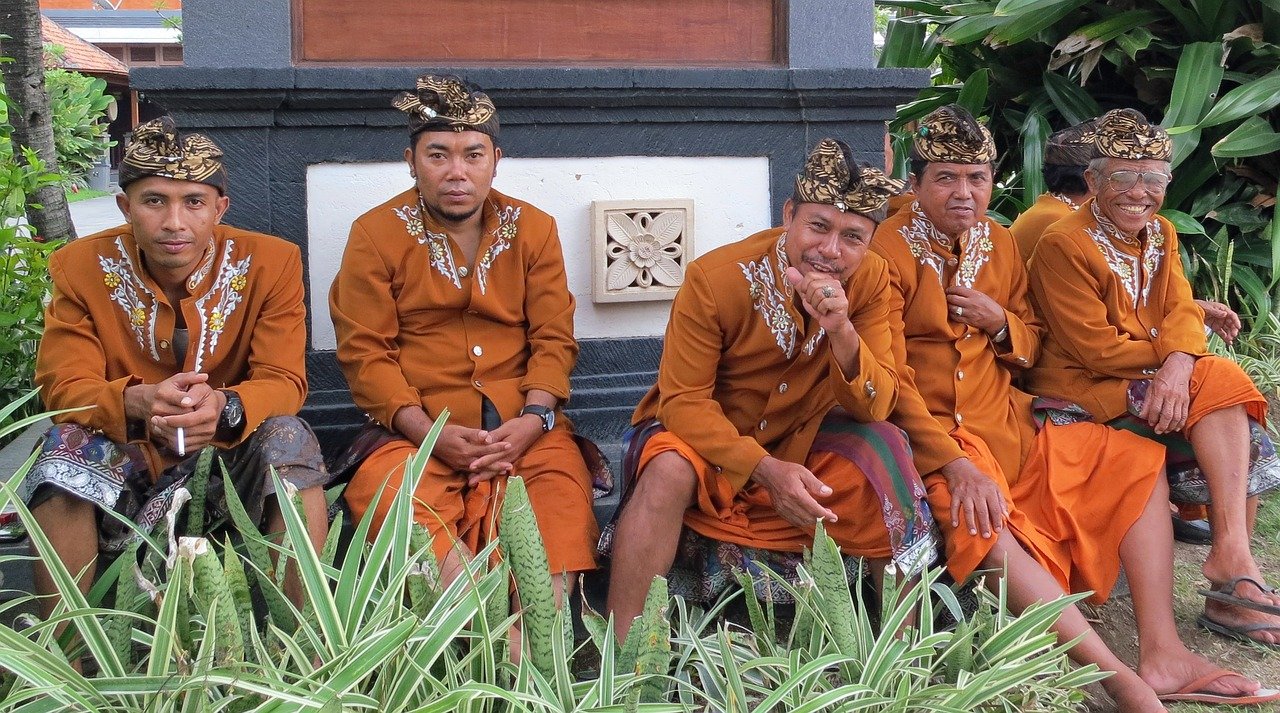Orientation and Its Significance to Balinese Spirituality
Every aspect of Balinese religion is centered on the concept of spatial orientation
Table of Contents Show
Discover orientation and its significance in Balinese religion
Bali, a picturesque island located in Indonesia, is known for its vibrant culture and rich spiritual heritage. The Balinese people have embraced Hinduism for centuries, creating a unique blend of religious practices we call Balinese Hinduism that reflect their deep connection with the divine.
In this article, we will consider the profound influence of Hinduism on the Balinese religion, exploring the spiritual and cultural aspects that shape the Balinese way of life.
The Balinese Concept of Polarity
In the Western world, the duality of good and evil is often presented as mutually exclusive choices. However, in Balinese Hinduism, this division is neither stark nor exclusive. The Balinese recognize the concept of "rwa bineda," which refers to the polarity of opposing forces. Rather than seeking to destroy evil, the Balinese focus on maintaining an interdependent balance between opposing forces. This notion of three forces, overlapping and constituting a whole, lies at the core of Hindu theology in Bali.
Spatial and Spiritual Orientation
Orientation holds great significance in Balinese culture, both in physical and spiritual terms. The Balinese possess a deep sense of direction, which extends beyond mere physical space. The sacred mountain, Gunung Agung, serves as a crucial point of reference for orientation. The direction toward the mountain is called "kaja," symbolizing the sacred and divine. On the other hand, "kelod" represents the seaward direction, associated with lower elevations and considered less sacred.
The Balinese Compass
The Balinese compass consists of eight compass directions, including the cardinal points of "kaja" (north), "kangin" (east), "kelod" (south), and "kauh" (west). These cardinal points are further divided into intercardinal divisions. Additionally, the Balinese recognize the importance of the center as a separate direction. Each direction is believed to house a different aspect of God, with associated colors and characteristics. This intricate compass system permeates every aspect of Balinese society, from cosmology to daily activities.
Orientation in Balinese Society
Like all Balinese villages, this village is aligned in the kaja-kelod orientation.
The concept of orientation extends beyond the physical realm and shapes the organization of Balinese society. Villages are aligned kaja-kelod, with the kelod end associated with the cemetery and the temple dedicated to Siwa or Durga. Conversely, the kaja end is home to the Pura Puseh, the temple dedicated to Wisnu. This alignment extends to individual house compounds, where the family temple occupies the most sacred position, kaja-kangin. The Balinese meticulously arrange their living spaces according to these orientations, ensuring harmony and balance.
The Hindu-Balinese Universe
The Balinese understanding of orientation is deeply rooted in the Hindu conception of cosmic structure and organization. Man is considered a microcosm of the universe, mirroring its three-part structure. The head represents the upper world of God and heaven, the body symbolizes the middle world of man, and the feet signify the underworld. Similarly, the island of Bali, each village, temple, and house compound reflects this tripartite structure. By aligning themselves with these interlocking orientations, the Balinese seek to maintain balance and harmony in their lives.
Orientation in Daily Life
The Balinese incorporate their deep sense of orientation into their daily lives. Instead of using terms like "left" or "right," the Balinese rely on compass directions to describe locations and give directions. Whether it is carrying a heavy load, inviting someone into their home, or providing travel directions, the Balinese always refer to compass directions to ensure precise communication. This practice highlights the importance of orientation in their culture and fosters a deep connection with their environment.
The Symbolism of Kelod
The direction of kelod, often associated with the sea, is often misunderstood as being impure. However, the Balinese view the sea as a place of exceptional purity. Kelod represents a different aspect of the polarity, not necessarily lesser or impure. It is a direction of balance and serves a vital role within the overall cosmic structure. The Balinese recognize that each direction has its significance and purpose, contributing to the harmonious functioning of the universe.
The Significance of Orientation in Balinese Religion
Orientation plays a crucial role in Balinese religious rituals and ceremonies. The alignment of temples and the positioning of sacred objects within them reflect the interplay of orientations. Even the arrangement of the body during sleep, with the head facing kaja or kangin, is considered significant. The Balinese believe that proper orientation ensures a harmonious connection with the divine and the forces of good and evil. By aligning themselves with the right directions, they seek to maintain spiritual equilibrium.
Conclusion
Orientation is deeply embedded in Balinese culture and plays an integral role in everyday life. The Balinese recognize that each direction has its own significance and purpose, contributing to the harmonious functioning of the universe. Orientation is used to describe locations, give directions, and align temples or sacred objects, all of which ensure a harmonious connection with the divine. By aligning themselves in the right direction, they seek to maintain spiritual equilibrium and balance in their lives. Understanding orientation is key to understanding the Balinese way of life and how they interact with their environment.
Fascinated? You might also like to read about: Understanding the Odalan: A Vibrant Balinese Temple Festival and What’s in a name: Is Balinese ‘religion’ agama Hindu?
Frequently asked questions on orientation in Balinese religion
What is the concept of orientation in Balinese religion?
Orientation in Balinese religion refers to the spatial and spiritual positioning of individuals, temples, and objects in relation to sacred directions, such as Kaja (sacred mountain) and Kelod (sea or lowland).
How does the concept of orientation manifest in Balinese religious practices?
The concept of orientation is reflected in the placement of temples, houses, and even seating arrangements during ceremonies, with the intention of aligning individuals and objects with the sacred directions.
What is the significance of Kaja in Balinese religion?
Kaja represents the sacred mountain or highland direction associated with the gods. It is considered a spiritually elevated and auspicious direction, symbolizing purity and divine presence.
What does Kelod represent in Balinese religion?
Kelod represents the sea or lowland direction associated with demons. It is believed to be a spiritually lower realm, symbolizing impurity and potential negative influences.
How does the concept of orientation influence temple architecture in Bali?
Temple architecture in Bali is designed to align with the sacred directions. The main entrance of a temple typically faces Kaja, while the innermost sanctum is positioned towards the holiest direction.
How does the concept of orientation impact daily life in Balinese society?
Balinese people consider orientation when building their homes, arranging furniture, and even choosing the direction to sleep. It is believed that aligning oneself with the sacred directions brings positive energy and spiritual harmony.
What role does orientation play in Balinese rituals and ceremonies?
Orientation is crucial in Balinese rituals and ceremonies as it determines the positioning of offerings, participants, and the flow of energy. It ensures that the rituals are conducted in accordance with spiritual principles.
How does the concept of orientation relate to the balance between good and evil in Balinese religion?
The concept of orientation reflects the belief in the coexistence of good and evil forces. Balinese people strive to maintain balance by acknowledging both Kaja (good) and Kelod (evil) and seeking harmony between them.
Are there any specific rituals or practices associated with orientation in Balinese religion?
Yes, rituals such as "melasti" and "ngenteg linggih" are associated with orientation in Balinese religion. "Melasti" is a purification ritual that involves carrying temple effigies to the sea or other bodies of water to cleanse them and align them with the sacred directions. "Ngenteg linggih" is a ritual that involves placing offerings and effigies in a specific orientation to honor the gods and maintain spiritual balance.
How does the concept of orientation reflect the Balinese philosophy of Tri Hita Karana?
The concept of orientation is closely tied to the Balinese philosophy of Tri Hita Karana, which emphasizes harmony between humans, nature, and the divine. By aligning themselves and their surroundings with the sacred directions, Balinese people seek to maintain balance and harmony between these three elements.





















Bali's remarkable rice terraces draw numerous tourists. However, could tourism pose a threat that the age-old Subak system might struggle to overcome?